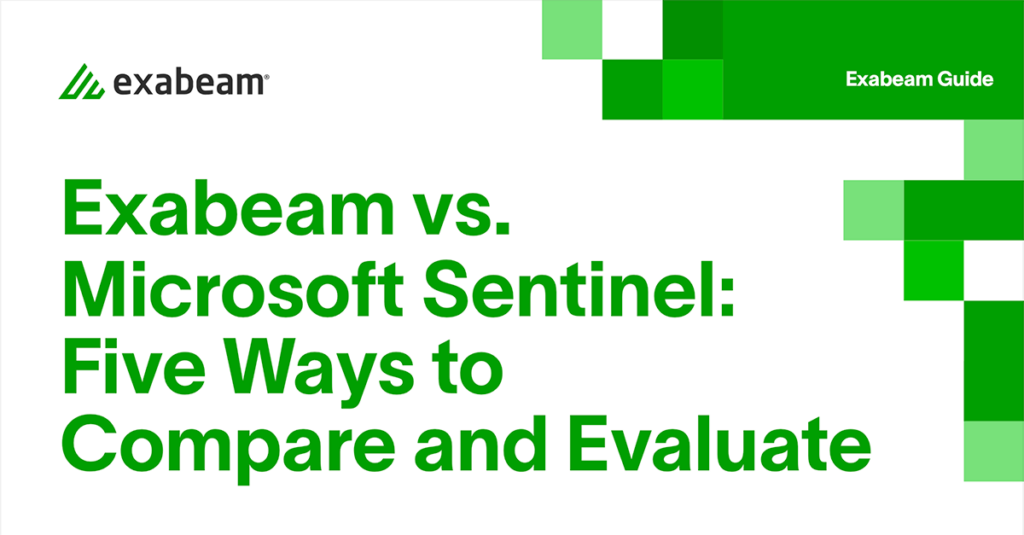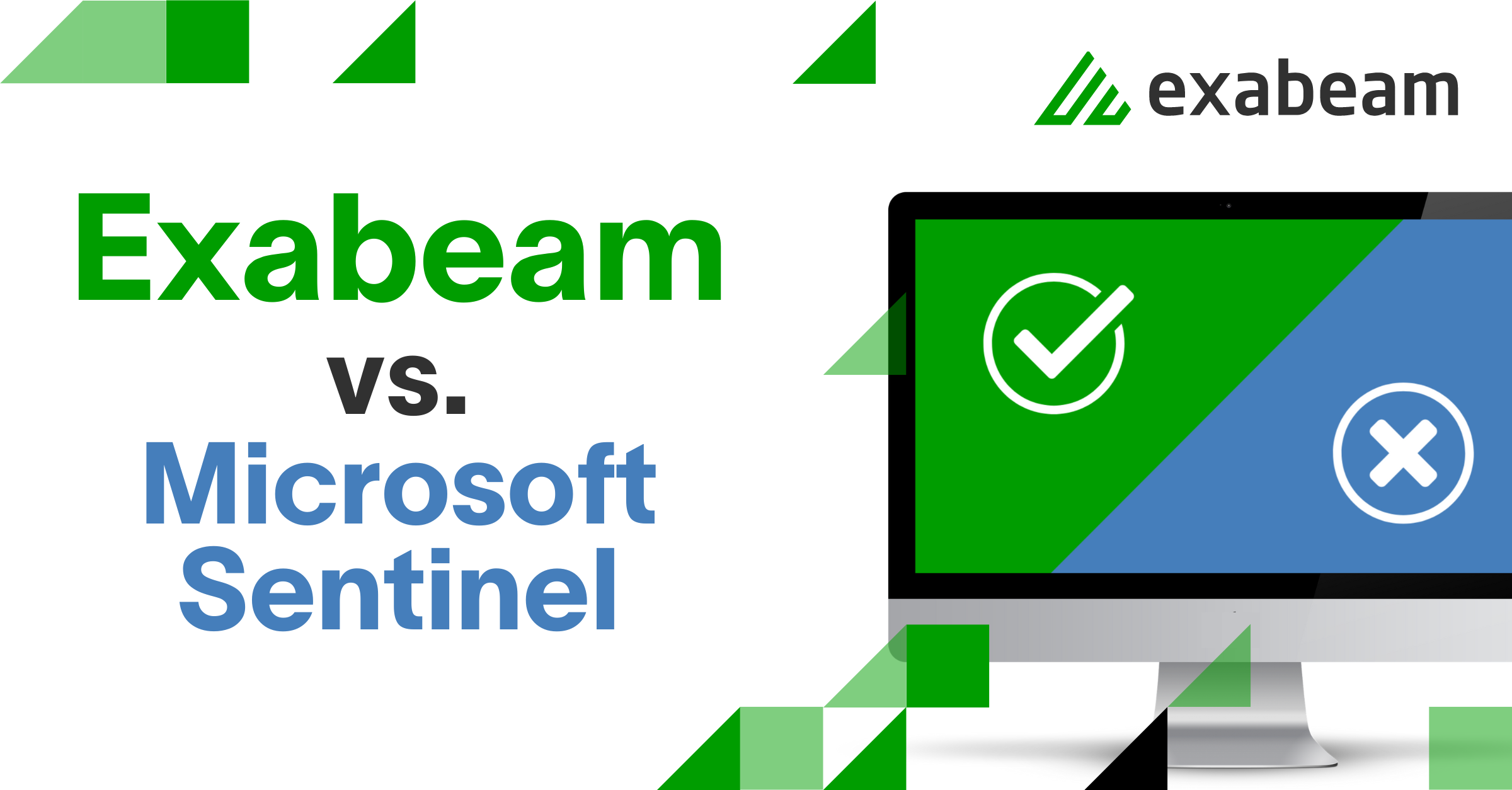Security information and event management (SIEM) is one of the most important tools in the fight against cyberthreats, but not all SIEMs are created equal. Native SIEM solutions can be difficult to customize and maintain, and their advertised “low or free” costs can add up quickly when you factor in log storage and additional features. Furthermore, as organizations use a mix of vendors and cloud providers, integrating multiple log sources can be a challenge for achieving a cohesive view of threats.
To combat these challenges, organizations need a SIEM solution that is equipped with pre-packaged rules, timelines and guidelines for security investigations, and is easy to set up and use. The market is flooded with SIEM options, making it hard to decide between Exabeam and bundled solutions such as Microsoft Sentinel. In this blog post, we will explore five ways in which Exabeam Fusion tops Sentinel and why it is a better choice for security teams.
Five ways Exabeam outperforms Microsoft Sentinel
- Exabeam is vendor-agnostic: One of the key benefits of Exabeam is its ability to integrate with a wide range of vendors and tools — unlike Sentinel, which is only easy to integrate with other Microsoft solutions. This allows security teams to have a holistic view of their security posture, regardless of their technology stack.
- Exabeam allows for custom rule creation: Another major benefit of Exabeam is its ability to create custom correlation rules. Sentinel comes with many pre-built correlation rules, but it does not allow for the creation of custom rules for non-Microsoft logs or sources. Exabeam provides the ability to create custom rules across any log source or context table (including threat intelligence data from external sources), which allows security teams to tailor the platform to their specific needs and requirements.
- Exabeam supports multiple cloud environments: Sentinel requires you to secure workloads on Azure. However, Exabeam supports multiple cloud environments, including Amazon Web Services (AWS), Azure, and Google Cloud Platform (GCP). This allows security teams to secure their workloads regardless of the cloud environment they use.
- Exabeam uses a simple search syntax: Sentinel requires custom Kusto Query Language (KQL) language in search, which requires a learning curve for users. Exabeam, on the other hand, uses a simple search syntax that is easy to use and understand with suggested, predictive text and drop-down options for field names. This allows even inexperienced security teams to quickly and easily search through their logs, without needing to learn a new language.
- Exabeam includes UEBA capabilities: Sentinel offers many pre-built correlation rules, but lacks user and entity behavior analytics (UEBA) capabilities beyond Azure. Exabeam includes UEBA, enabling security teams to detect and respond to threats that traditional rules-based systems may miss. Furthermore, using machine learning- (ML) based behavior analytics in Sentinel typically requires support from Microsoft, as the process is quite complex and requires the vendor’s team to configure it — resulting in additional costs for professional services. Additionally, Sentinel’s ML-based behavior analytics rules are not customizable and the internal logic of when they run is not visible. Sentinel does offer regular-based anomaly detection with some ML capabilities, which can be customized and usually takes anywhere from one to three weeks to train in the environment.
Of note: Sentinel isn’t free
We would be remiss if we didn’t acknowledge the common misconception that Sentinel is free. That is not the case. The truth is that although Microsoft advertises that many parts of Sentinel are free (including some logging sources), upon examination of the fine print you’ll find that “free” only covers a small subset of log types or data tags, and only integrates specifically with other parts of the Azure Security Center. Full log storage does cost money, which you only find out later on down the road as you attempt to implement a full-scale SIEM solution.
Sentinel’s free tier is only intended for testing and evaluation purposes. It is not meant for production use and comes with limitations on the amount of data that can be ingested, stored, and analyzed. Additionally, the free tier does not include access to all of the features and capabilities that are available in the paid tiers. To use Sentinel for production workloads, you will need to have an Azure subscription and pay for the resources that you use. This includes the cost of data ingress, storage, and analysis, as well as any additional services or features that you may need.
Conclusion
Exabeam Fusion offers organizations a cost-effective, easy-to-use, and comprehensive SIEM solution that can improve security outcomes and integrate with your existing technology stack. With features such as custom correlation rules, support for multiple cloud environments, simple search syntax, and UEBA capabilities, Exabeam is a powerful solution for organizations looking to improve their security posture.
Learn more about Exabeam
To learn more, download our guide, “Exabeam vs. Microsoft Sentinel: Five Ways to Compare and Evaluate“.

Similar Posts
Recent Posts
Stay Informed
Subscribe today and we'll send our latest blog posts right to your inbox, so you can stay ahead of the cybercriminals and defend your organization.
See a world-class SIEM solution in action
Most reported breaches involved lost or stolen credentials. How can you keep pace?
Exabeam delivers SOC teams industry-leading analytics, patented anomaly detection, and Smart Timelines to help teams pinpoint the actions that lead to exploits.
Whether you need a SIEM replacement, a legacy SIEM modernization with XDR, Exabeam offers advanced, modular, and cloud-delivered TDIR.
Get a demo today!













